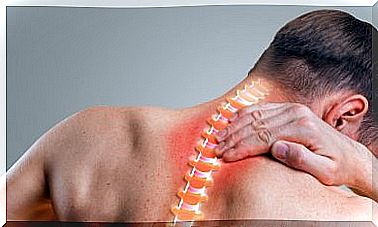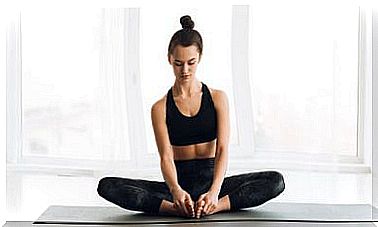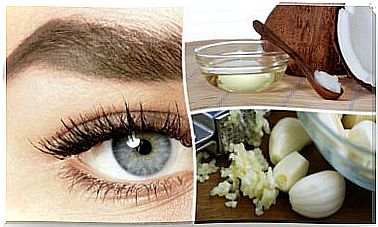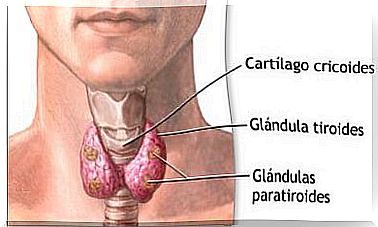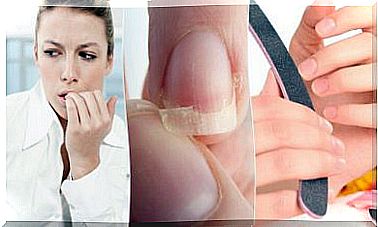5 Stretches You Can Do Before Going To Bed
The relationship between rest and health has become, for some time now, a fundamental object of study in contemporary societies. That is why we bring you a list of 5 stretches to do before going to bed that will improve your sleep hygiene.
As explained in the note published by the Spanish Association of Occupational Medicine Specialists, an adequate quality and quantity of sleep contributes to preserving mental and physical health. That’s why we give you these tips for you to practice.
The dream trance consists of several stages in which neuronal systems are activated that participate and enable procedures of cell repair, learning improvement, cardiorespiratory activity, memory strengthening and hormonal regulation.
In this way, poor quality of sleep can cause memory and concentration problems, mood disorders and cognitive function disorders. For that reason we bring you these stretches that you can do before going to bed to achieve a restful rest.
What are the benefits of stretching before bed?
It may not be an easy idea to assimilate, but it is true that performing subtle stretches before going to bed can prevent contractures and muscle aches due to poor posture throughout sleep.
In addition, one should not lose sight of the fact that, when sleeping, we remain for several hours without moving, which can cause dulling of the function of some joints. By following the exercises that we propose below, you will be able to optimize muscle and joint rest, alleviating the adverse consequences.
5 stretches before bed
We are not talking about magic or the occult; It is about putting into practice some very simple exercises that you can do before going to bed and that will help you relax. The pleasant and restful sleep so longed for by so many is only a few stretches away.

1. Exercise to stretch the neck
Sitting in a chair or armchair with a good backrest, we take the opposite ear with one hand, so that the arm passes over the head. We weight towards one of the sides.
The position is held for 30 seconds and then the exercise is repeated with the other arm and to the opposite side. It is recommended to breathe deeply during practice, since breathing is an element that adds to muscle relaxation.
2. Stretching the rectus abdominis
The starting position to practice this exercise is to lie on your stomach and, if possible, on a yoga mat. The feet must be supported on the toes, so that the insteps and the last part of the legs do not touch the floor.
Then the hands are supported on the mat, at shoulder height, so that the arms are bent with the elbows pointing backwards.
Finally, using force with the arms, the torso is raised and carried back as far as possible, accompanying the head. You must remain in this position for a few seconds and, after descending gently, the exercise is repeated several times.
3. Pectorals
This stretch is performed standing up and requires, first, stretching one of the arms to the side and resting the hand flat on a wall or a door frame. Then it must be taken into account that the ulnar fossa – the fold in which the two parts of the arm meet – must be perpendicular to the floor. We must be careful so that the shoulder does not rise.
The second step is to turn the head to the opposite side of the arm that we have stretched and tilt it slightly. As in the previous stretches, you must stay in this position for a few seconds and then disarm it and repeat with the other arm.
4. Calf stretch
One of the simplest exercises. It is about getting on a step or some elevated surface – it can be a pile of books. Once this is done, we place the tip of one of the feet on the projecting end of the step and, with the leg well stretched, we let the weight of the heel fall down.
The other leg should be hanging in the air. After a few seconds the position is disarmed and the exercise is repeated with the opposite leg and foot.
5. Hip flexors
To perform the last stretch, we must adopt the starting position, which implies supporting the lower part of the legs -from the heel to the knee- on the floor, with the back straight.
Then one of the legs is raised and arched forward, so that it is flexed, supporting the entire sole of the foot on the floor and bringing the leg that remains on the floor forward.
Finally, you should take the knee of the raised leg with both hands and try to lower the pelvis as far as possible towards the ground, in the direction of the opposite leg. Once the stretch is finished, return to the starting position and reverse the position of the legs to stretch the muscle on the opposite side.
Bedtime considerations for a good night’s sleep
In addition to performing the exercises above regularly, there are some other suggestions that can be followed to achieve a restful and restful sleep. One of those tips involves, as far as possible, not using any kind of electronic device before sleeping.
Another important recommendation is to respect the circadian rhythm. This means that the body is prepared in its physiology to sleep in the dark hours of the night and to be awake during the day. Not respecting this synchronization between organism and nature can cause the brain to generate less melatonin and make it more difficult for us to sleep.

Combine bedtime exercises with a suitable diet
There are foods such as bacon, nuts or cheese that contain a chemical called tyramine , which is capable of producing a brain stimulant called norepinephrine , which makes it difficult to fall asleep. That is why it is not recommended to eat foods with tyramine before going to bed.
In the same way, you should not drink alcoholic or caffeinated beverages. Drinking before bed can cause fragmented and poorly restful sleep, as well as sleep apnea.
For its part, caffeine is a stimulant that not only alters the circadian rhythm, causing difficulties in falling asleep, but also hinders the possibility of having a deep rest.


